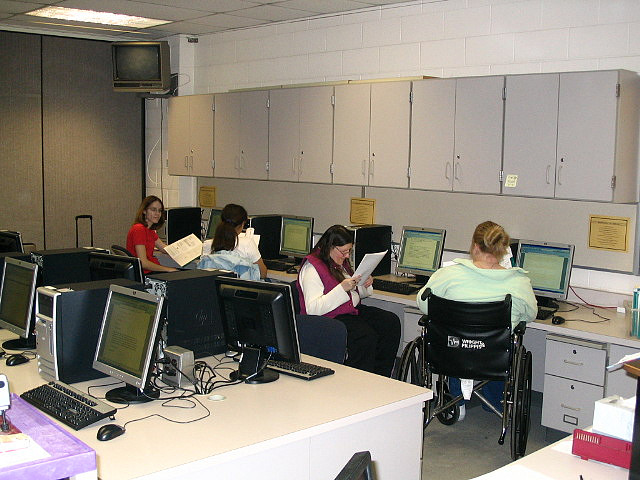


Two of the keynote speakers at the Indiana Governor’s Council for People with Disabilities annual convention held earlier in this month in Indianapolis were of the variety one would expect at a conference with the theme, “Celebrating Community.” National Council on Disability executive director Aaron Bishop has spent his entire professional career advocating for people with disabilities on a policy-making level, while MIT professor Ceasar L. MacDowell’s role as director of the institute’s Center for Reflective Community Practice gives him impeccable credentials for framing discussions about public engagement on issues concerning underserved citizens.
But some of the 400 attendees must have paused when reading the conference packet bio for the third keynote speaker, Glen Hiemstra. That’s not to imply Hiemstra is a lightweight by any stretch; his client list for strategic planning at Futurist.com reads like a Fortune 500 list. But what sort of wisdom can the author of Turning the Future Into Revenue impart to a roomful of people whose budgets are largely tied to fundraising campaigns and municipal resources?
The answer, of course, is “quite a bit” — otherwise it would not warrant comment in this space. Hiemstra’s presentation urged attendees to create the future they prefer. Tim Coxey’s post-conference article, “Accessible Communication,” on his marketing firm’s blog indicates a virtual real-time processing of that lesson:
How do I ensure that the messages I send — videos, logos, presentations, blogs, etc. — are accessible and communicable to everyone? Do our tweets, PowerPoints and YouTube spoofs take into consideration the stenographer’s ability to recount the words or an interpreter’s capability of expressing the sentiment?
The same tools Coxey envisions adapting to reach the 54 million consumers identified as persons with disabilities by the U.S. Census Bureau have applications beyond the technology-driven advertising and marketing sector. Each can have a profound impact on a person’s opportunities to live independently and interact socially, and in our market-driven economy how that is accomplished relies in part on the companies’ preferred vision of the future.
To that end, Vodafone Foundation, the philanthropic arm of the U.K.-based mobile communications technology firm, made a big stride toward inclusiveness last week with its first Smart Accessibility awards. Four mobile app developers were each awarded 50,000 euros for innovations in the categories of “Wellbeing,” “Mobility,” “Independent Living,” and “Social Participation.”
The big-picture impact of Vodafone’s initiative is evident in the explicit endorsements by policymakers like Neelie Kroes, the digital agenda commissioner for the European Commission, and European Disability Forum secretary Rodolfo Cattani, who The Guardian reported as telling the attendees of the ceremony in Brussels, Belgium:
The digital divide has become the most treacherous ground of discrimination in the knowledge society… This should help persuade the industry that producing accessible and usable goods and services is a business case, not a good deed.
Innovations for people with disabilities that enrich the rest of the society aren’t confined solely to the mobile market. The December 12 “Innovations” section of The Washington Post has a nice slide show of photos depicting advances in health care that leads into an impassioned editorial by Jay Ruderman, president of the Ruderman Family Foundation based in Boston, in which he says bluntly that American businesses are “hurting” themselves by not integrating people with disabilities into the work force. He then eloquently proffers his own futuristic vision for a society:
The person in a wheelchair, after all, could become a vice president of information technology, if he gets the same opportunities and mentoring that others receive. A little person might become the head of occupational therapy with some minor modifications to the workplace. The person with Down syndrome can help teachers and students as a teacher’s aide. The person with mental illness might be the advertising genius your company needs to take on your competition. The list of possibilities is practically endless.
How can some of our current technologies be innovated to provide career training for people with disabilities, or enhance a person’s opportunity to live independently? Share your vision for the future in the comments section.
Image by kchichester (Karen Chichester), used under its Creative Commons license.